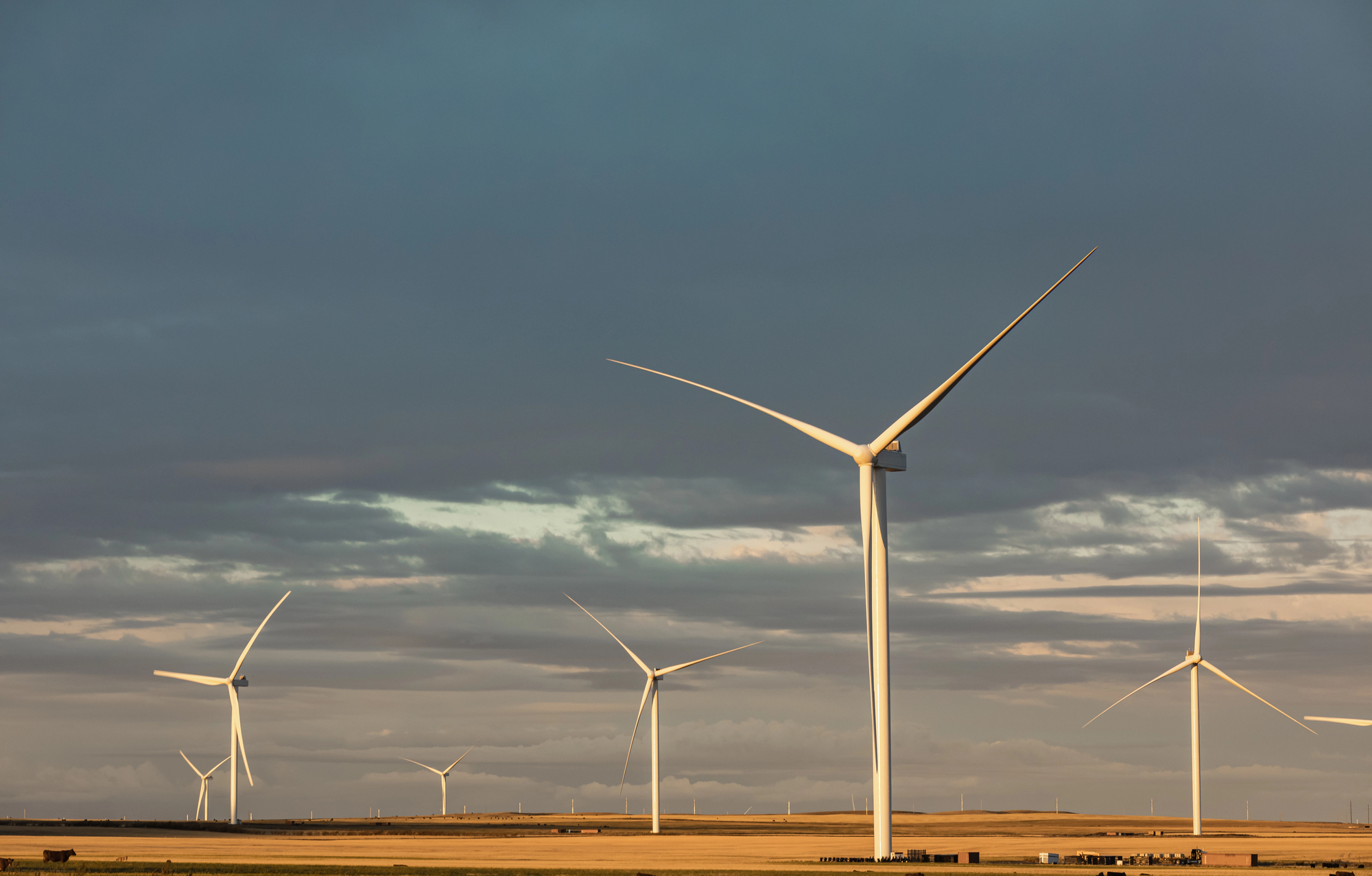Amid the ongoing invasion, Ukraine faces the need for reconstruction in response to the massive damages caused by Russia’s war of aggression. While reconstruction is necessary across all sectors, including energy, industry and broader infrastructure, the greatest damages (over EUR 54 billion) have been registered in the Ukrainian residential sector. In a recent study, the Low Carbon Ukraine initiative discusses instruments for enhancing investment into energy efficiency in Ukraine.
Geographical damage distribution in the residential sector, million m2
Source: Kyiv School of Economics, State Committee on Statistics of Ukraine, authors’ calculations
As the country reconstructs, opportunities may arise to rebuild Ukraine’s housing stock in a better, more energy efficient manner, introducing significant possible benefits for the population and the country. By incorporating energy-saving technologies and practices, Ukraine can not only reduce energy consumption and cut emissions but also increase national resilience. Yet, despite this potential, existing policies and funding mechanisms fall significantly short of addressing these needs. The scale of investment required for energy efficiency in Ukraine is substantial, with estimates suggesting a need for approximately EUR 13 billion by 2030, but current funding covers less than 4% of this amount. Meeting this financial demand will require a blend of public and private financing. While government-led initiatives like the Energy Efficiency Fund (EEF) are vital, they alone cannot fully bridge this gap.
One of the key barriers preventing a larger rollout of energy efficiency solutions are high upfront costs along with long payback periods which can deter households from investing, especially in multi-family houses where coordination among owners with different incomes is required. To overcome this, one of the promising mechanisms can be Green Reconstruction Mortgages which offer homeowners favourable financial conditions for energy-efficient (re)construction and renovation. Green Reconstruction Mortgages could be adapted to Ukraine’s specific needs by offering flexible repayment terms and potentially integrating subsidies or grants for low-income households in affected areas. Furthermore, unlike traditional mortgages, they factor in long-term energy savings from energy efficiency improvements. By capitalising on these future savings, homeowners can access larger loans or make energy upgrades without significantly increasing their financial burden. For new home purchases, Green Reconstruction Mortgages increase purchasing power by considering the expected savings on energy bills from energy-efficient designs. For existing homes, these mortgages allow homeowners to carry out energy efficiency upgrades while maintaining manageable down-payment levels.
This instrument is particularly valuable in Ukraine, where the mortgage market is still underdeveloped. By introducing subsidised Green Reconstruction Mortgages, not only would the availability of mortgages in general expand, but this mechanism would also help fill the financing gap for energy-efficient upgrades in single-family homes, which are currently underserved. Green Reconstruction Mortgages can be modelled after existing programs, such as the State Fund for Support of Youth Housing Construction, which provides long-term preferential loans for young families, or the energy-efficient rehabilitation loans for internally displaced persons (IDPs). These programs show the potential of combining international donor support with Ukraine’s own funds.
Additionally, public-private partnerships (PPPs) hold potential by allowing utilities and private entities to invest in community-level energy efficiency projects, which could enhance grid stability while sharing costs more evenly across stakeholders. In these partnerships, municipalities, private developers, and utilities can also collaborate to build affordable, energy-efficient housing, addressing both immediate housing needs and long-term infrastructure goals. By leveraging private sector efficiency, PPPs can reduce the financial burden on local governments while ensuring that energy efficiency standards are integrated into new construction.
Gradual transition through pilot projects in selected areas can be a first step in implementing PPPs. These pilot projects should test and refine processes of the construction of affordable housing and its further privatisation. During this phase, data and feedback collection will be essential for improving processes and identifying best practices before broader implementation. Once the pilot program is deemed successful, the scale-up of affordable housing projects and privatisation efforts can extend to additional regions and housing developments, ensuring a more streamlined and efficient approach to housing reconstruction.
A successful example of such a PPP is the Energiesprong initiative in the Netherlands, which started as a project for retrofitting existing social housing to achieve net-zero energy consumption. In collaboration with housing associations, private construction companies and energy providers retrofit homes to produce as much energy as they consume, using renewable energy solutions such as solar panels and enhanced insulation. For private developers and construction firms, returns come through payments from housing associations, financed partly by the energy cost savings achieved over time. This structure offers residents reduced or zero energy bills while providing private companies with a secure income stream through long-term contracts. The partnership involves national and local governments, housing associations, and private companies, illustrating the feasibility of financing energy-efficient retrofits on a large scale, with long-term energy savings helping to cover upfront costs. This model showcases how PPPs can successfully align public and private interests, achieving sustainable outcomes that benefit both investors and communities. Currently, the model has been adapted for new construction projects, for example in the United Kingdom and in Germany.
A critical factor to making these investments economically viable is addressing Ukraine’s subsidised energy tariffs, which currently obscure the true cost of energy. Without price signals that reflect actual market conditions, consumers have little incentive to invest in energy efficiency. Aligning tariffs with market rates would reduce payback periods for efficiency investments, making them more attractive. Moreover, this adjustment would alleviate fiscal pressure on state-owned energy companies, allowing them to reinvest savings into infrastructure modernisation. While electricity tariffs have recently increased from 2.64 UAH/kWh to 4.32 UAH/kWh (almost 60% increase), true tariff reform and market liberalisation is essential for creating a sustainable energy system that rewards efficiency and eases the burden on public budgets. The reform must be carefully managed to avoid disproportionately impacting low-income households. Hence, a targeted, consumption-independent support scheme for vulnerable consumers is crucial for gradual phasing out of quasi-subsidies in the form of non-recovering tariffs, while still protecting consumers, especially within the current war-time context of diminished savings and higher unemployment.
While tariff reform can create a more sustainable energy system, it needs to be paired with targeted support mechanisms to drive energy efficiency at scale. In this regard, the EEF can play a crucial role in supporting energy efficiency, though its current scope is limited. Today, the EEF primarily supports multi-family houses organized in homeowner associations (HOAs), thereby excluding over 80% of Ukraine’s residential buildings — namely, single-family homes and non-HOA multi-family homes. This narrow eligibility overlooks rural areas where single-family homes are more common (figure 1), and where energy efficiency improvements are often most needed due to outdated infrastructure.
Figure 1. Distribution of approximated living space across SFHs and MFHs in Ukraine 2021, million m2
Source: State Statistics Service of Ukraine, square meters per Oblast are approximated by the authors
Prior to the full-scale invasion, 51% of all Ukrainian households resided in single-family homes, while 49% lived in multi-family units, underscoring the need to broaden EEF eligibility to include all building types. Empowering municipalities to act as local administrators and loan recipients could further enhance accessibility and ensure that all communities, urban and rural alike, can benefit from these initiatives. With their localised understanding of energy modernization needs, damage assessments, and priority setting, municipalities are well-positioned to oversee both building-specific upgrades along with a broader thermal system planning. Since March 2024, the government has enabled municipalities of smaller size to borrow from international financial organizations and local banks. Therefore, the approach of using municipalities as a borrower on a larger scale became possible. This approach can facilitate EEF support for both single-family homes and non-HOA MFHs. To further incentivise HOA formation, MFHs with HOAs could qualify for a higher grant component, while non-HOA MFHs would receive more loan-based support. This maintains incentives for establishing HOAs while increasing the eligible user base. HOA formation within a specified period can be one of the conditions for obtaining EEF support by an MFH.
Besides addressing funding, tariffs, and eligibility, raising public awareness is another critical component of this strategy. A recent survey by the Friedrich Ebert Foundation and Ecoaction found that 74% of respondents were unaware of support programs for energy efficiency, and only 53% were certain that efficiency improvements could add value to their properties. Moreover, there is a strong sentiment that residents should not shoulder more than 20% of the costs of energy efficiency upgrades, with the rest covered by state or local budgets. These insights point to the need for a comprehensive awareness campaign, in addition to the financial mechanisms. Leveraging media, social networks, and educational channels could highlight the benefits of residential energy efficiency, while also informing the public about available support programs.
The path forward requires a holistic approach: securing funding, reforming tariffs, expanding eligibility, streamlining bureaucratic processes, and enhancing public awareness. While the investment and eligibility gaps are significant, they are only part of the broader challenge. The lack of awareness underscores a further issue and must be addressed to achieve lasting success. By building a foundation of informed and engaged citizens, Ukraine can ensure that energy efficiency becomes a pillar of its resilience and sustainable growth.
Photo: depositphotos.com/ua
Attention
The authors do not work for, consult to, own shares in or receive funding from any company or organization that would benefit from this article, and have no relevant affiliations



